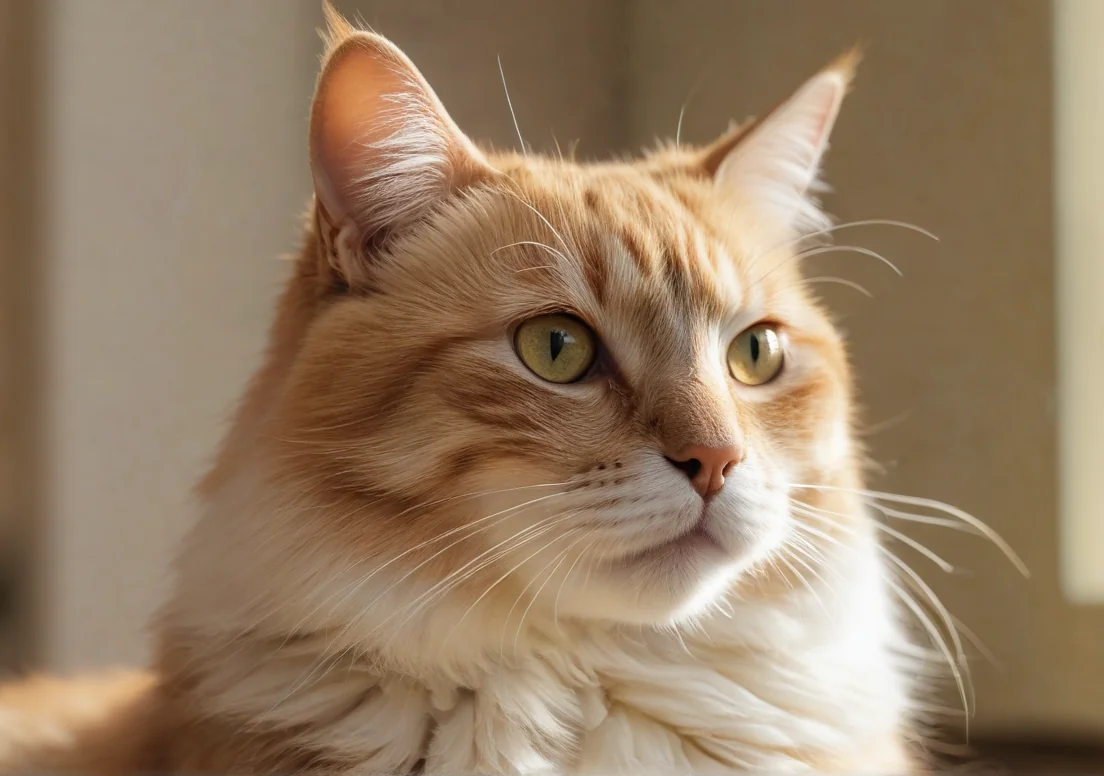When you notice your feline friend lacking energy or acting unusually lethargic, it might not just be a simple case of cat-napping gone too far. Low potassium levels in cats can lead to a series of health issues that require attention and care.
Cats can experience low potassium for several reasons, including dietary deficiencies, underlying health conditions, and certain medications. These low levels can affect muscle function and overall well-being, making it essential for pet owners to monitor their cat’s health closely. But wait, there’s more to these hidden health risks than just low potassium; keep reading to uncover what’s really going on inside your cat’s body.

What causes low potassium levels in cats
Low potassium, or hypokalemia, can sneak up on our feline friends, and a variety of factors can be at play. One major culprit is dietary deficiencies; many commercial cat foods lack adequate potassium levels, especially if they’re primarily composed of low-quality ingredients.
Certain health conditions can also lead to low potassium. For instance, diseases like chronic kidney disease (CKD) often disrupt potassium balance due to the kidneys’ reduced ability to retain nutrients. Hyperaldosteronism, a hormonal issue, can also lead to increased loss of potassium through urine.
Another unexpected cause is excessive vomiting or diarrhea, which can deplete potassium quickly from the system. Additionally, certain medications, particularly diuretics, can wash away potassium, making it crucial to monitor your cat if they’re on these medications.
Keep an eye on your cat’s hydration as well. Severe dehydration can exacerbate potassium loss. Ensuring your cat has access to plenty of fresh water can help mitigate this issue, acting as a safeguard against potential deficiencies.
As a unique insight, it’s worth noting that stress can play a role, too. Situations like moving to a new home or even a visit to the vet can lead to changes in appetite and digestive health, which might lead to potassium loss over time.
What are the signs of low potassium in cats
Spotting low potassium in cats can be tricky, but there are some telltale signs to watch out for. One of the most noticeable symptoms is weakness. If your cat seems lethargic, struggles to jump, or has a harder time playing, it might be time to investigate further.
Another common sign is a poor appetite. If your cat suddenly becomes disinterested in food, it could be due to low potassium levels affecting their overall health. Alongside this, look for muscle cramps or twitching, which can occur as potassium levels drop and muscle function becomes affected.
Cats may also exhibit changes in urination patterns—either urinating more frequently or having difficulty with urination as potassium plays a role in muscle and nerve functions.
Here’s a quick list of signs to consider: – Lethargy: Unusual tiredness or weakness. – Poor appetite: Decline in eating habits. – Muscle cramps: Noticeable twitching or stiffness in limbs. – Frequent urination: Increased bathroom breaks or difficulty urinating. – Vomiting: Watching for sporadic vomiting episodes.
If you suspect low potassium, it’s best to consult with a veterinarian for a proper diagnosis and treatment. Early intervention can make a notable difference in your cat’s health. Regular check-ups and blood tests can help catch any trends towards low potassium before they become serious. For more details on potassium levels and feline health, check out the American Association of Feline Practitioners.
How can low potassium affect a cat’s health
Low potassium levels, known as hypokalemia, can have serious implications for your feline friend. This mineral plays a crucial role in maintaining muscular and bodily functions. When potassium dips too low, your cat may experience muscle weakness, which can be quite alarming. Weakness may manifest as a wobbly walk or difficulty standing after resting.
Beyond muscle function, low potassium affects how the heart and kidneys work. Cats can develop arrhythmias, which are irregular heartbeats. This can lead to fatigue and lethargy, making your pet less playful or responsive. The kidneys, significantly impacted by potassium levels, might not filter blood efficiently, raising the risk of chronic kidney disease over time.
Additionally, chronic low potassium can lead to complications like metabolic alkalosis, where blood pH levels become too high. This can affect breathing and overall health. Early intervention is key. Monitoring your cat’s condition and addressing any signs of low potassium promptly helps ensure a healthier and happier life for your pet.
What role does diet play in potassium levels
A cat’s diet is foundational to maintaining optimal potassium levels. Quality nutrition directly influences how well your kitty can absorb essential minerals like potassium. Here are some dietary factors to keep in mind:
- High-Quality Proteins: Foods rich in animal proteins, such as chicken or fish, can help maintain potassium levels.
- Wet Food: Canned cat food often contains higher moisture and better potassium content compared to dry kibble.
- Natural Ingredients: Look for diets that incorporate whole foods, as these often provide more bioavailable nutrients.
- Balanced Diet: A complete and balanced diet is essential for overall well-being, including potassium.
It’s essential to avoid inexpensive cat foods laden with fillers as these can lead to nutritional deficiencies, including low potassium. If you suspect your cat is struggling with potassium levels, consider working with a vet to evaluate their diet. To get started, refer to the American Association of Feline Practitioners for detailed guidance on feline nutrition: Cat Nutrition Guidelines.
As a bonus tip, consider incorporating potassium-rich treats like steamed pumpkin or green beans in moderation, as these can provide a healthy supplement to your cat’s regular diet.
Which diseases are linked to low potassium
Low potassium, or hypokalemia, in cats can point to several underlying health issues. One of the primary culprits is chronic kidney disease (CKD), which can cause potassium depletion as the kidneys become less effective at filtering. Another significant condition is hyperaldosteronism, where excess aldosterone leads to increased potassium loss.
Diabetes mellitus can also be a player; when the body doesn’t utilize insulin effectively, it can contribute to electrolyte imbalances, including low potassium. Additionally, cats suffering from vomiting or diarrhea for extended periods may lose substantial potassium through fluid loss.
Conditions like cushing’s disease or even certain medications, particularly diuretics, can exacerbate low potassium levels as well. On the other hand, muscle disorders like feline hyperkalemic periodic paralysis can arise when potassium levels fluctuate.
Here’s a quick look at diseases and conditions linked to low potassium:
- Chronic Kidney Disease (CKD)
- Hyperaldosteronism
- Diabetes Mellitus
- Prolonged Vomiting or Diarrhea
- Cushing’s Disease
- Medication Effects (e.g., Diuretics)
- Muscle Disorders (e.g., Hyperkalemic Periodic Paralysis)
Addressing these underlying conditions can help prevent potassium levels from dropping further. Regular veterinary check-ups are key to catching these issues early.
How is low potassium diagnosed in cats
Diagnosing low potassium in cats hinges on a combination of clinical signs and precise laboratory tests. Typical symptoms include weakness, lethargy, and muscle cramps, which might prompt a vet visit.
Veterinarians often start with a blood test to measure potassium levels directly. A complete blood count (CBC) and blood chemistry panel help identify any related abnormalities. If your vet suspects kidney issues, they may also run a urinalysis to explore how the kidneys are functioning overall.
In some cases, advanced imaging techniques, like ultrasound, can be helpful to evaluate organ health and look for tumors or other anomalies that might contribute to low potassium.
While these tests provide a good starting point, the vet may also inquire about your cat’s diet and any medications they’re taking, as these factors can significantly influence potassium levels. Frequent follow-ups may be necessary to track changes and adjust treatment accordingly. For more in-depth information about potassium levels in pets, the American Veterinary Medical Association has excellent resources.
What treatment options are available for low potassium
Low potassium in cats can result from various underlying issues, and addressing it often involves a tailored approach. Here are some common treatment options that veterinarians might recommend:
Dietary changes : Switching to a high-quality, potassium-rich diet can be beneficial. Look for formulas specifically designed to address mineral deficiencies. Foods like sweet potatoes and fish can help boost potassium levels.
Supplementation : If dietary adjustments aren’t enough, your vet may prescribe potassium supplements. These can come in various forms, including powders or pills, which can be added to your cat’s food.
Correcting underlying conditions : Sometimes, low potassium can be a symptom of a more extensive health issue, such as kidney disease or gastrointestinal disorders. Treating these conditions might naturally restore potassium levels.
Fluid therapy : In cases where dehydration or electrolyte imbalances are severe, intravenous (IV) fluids containing potassium might be necessary. This is usually done in a veterinary clinic.
Regular monitoring : Once treatment begins, regular follow-ups and blood tests will help track potassium levels and ensure the chosen treatment is effective.
If your cat is experiencing low potassium, working closely with your vet is crucial to finding the best treatment plan.
Can home remedies help boost potassium levels
While home remedies can provide support, it’s essential to approach them with caution. Making dietary adjustments is a practical way to help increase potassium levels. Here are some suggestions:
Incorporate more fruits and vegetables : Consider adding small amounts of potassium-rich foods like bananas, avocados, or cooked spinach into your cat’s diet. However, be mindful of any food allergies.
Offer leafy greens : While cats are primarily carnivorous, some may enjoy nibbling on leafy greens like kale or dandelion greens.
Cooked fish : Adding cooked fish, especially tuna or salmon, can provide both protein and potassium. Just ensure it’s prepared without seasoning.
Monitor hydration : Keeping your cat well-hydrated can aid in nutrient absorption. Fresh water should always be available, and a water fountain might entice your feline to drink more.
If you consider any home remedies, it’s best to discuss them with your veterinarian to ensure they align with your cat’s health needs.
For more detailed information on potassium deficiency in pets, you can refer to the American Animal Hospital Association for reliable resources.
Fun facts about potassium in feline health
Potassium plays a critical role in maintaining your cat’s overall health, affecting everything from muscle function to heart rhythms. It’s essential for nerve transmission and helps cells maintain their electrolyte balance. A well-balanced potassium level can prevent fatigue and weakness, keeping your feline energetic and playful.
Did you know that potassium is particularly linked to your cat’s kidney function? Healthy kidneys regulate potassium levels, so when those kidneys aren’t up to snuff, your cat can easily end up with a deficiency. This is especially common in older cats or those with chronic kidney disease.
Here are some key points about potassium in cats:
Muscle Function : Low potassium can lead to muscle weakness and even lethargy.
Heart Health : It helps maintain normal heart rhythms; an imbalance can cause palpitations or arrhythmias.
Digestive System : Potassium aids in proper digestion; low levels can lead to gastrointestinal issues.
Hydration : It plays a role in regulating fluid balance within the body.
For added insight, consider that certain medications or diets low in potassium—like those high in grains—can contribute to deficiencies. Regularly checking your cat’s electrolyte levels can help prevent complications. If you suspect your cat might be low on potassium, consult your vet for tailored advice. A balanced diet enriched with potassium-rich foods, like bananas (yes, some cats enjoy a bit!), can also make a big difference.
For more detailed information, the American Veterinary Medical Association offers great resources on pet nutrition and health.
Alex, a passionate animal lover, has experience in training and understanding animal behavior. As a proud pet parent to two dogs and three cats, he founded AnimalReport.net to share insights from animal experts and expand his knowledge of the animal kingdom.




